Kalgan (Galangal)
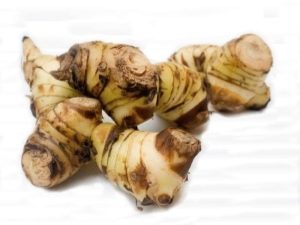
Among the species of the genus Alpinia (in Latin Alpinia) of the Ginger family (Latin name Zingiberaceae) there is a very useful healing plant with pretty white flowers in pink stripes - galangal.
Other names:
- Alpinia officinalis,
- Alpinia galanga,
- Kalgan officinalis,
- Galangal small.
- Galgant.
Title in other languages:
- English Chinese ginger, Lesser galangal;
- German Galganwurzel, Thai-Ingwer;
- fr. Galanga.
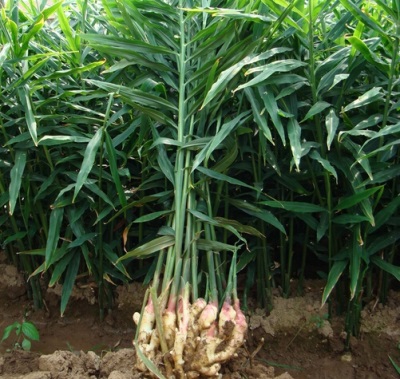
Do not confuse with galangal
Often this plant is confused with the root of the same name of several representatives of this genus - Kalgan and with plants of the same name, which are not relatives of Kalgan officinalis and belong to the genus Potentilla: toalgan-grass or wild galangal. One of the representatives of this genus is the erect cinquefoil. This plant is sometimes used instead of galangal officinalis. In the process of preparing drinks from alcohol, vodka or berries, in the absence of galangal, it is galangal grass that is used. It has an astringent effect, flavors and colors the drink.
In the first case, the small galangal is the root of 3 representatives of the Ginger family:
- Kalgan officinalis, which is called a small root;
- Alpinia galanga - considered a large root;
- Alpinia Chinese - called the Chinese root.
It is for this reason that in the 17-18 centuries Europeans called galangal "Russian root". It is a relative of ginger.
Appearance
Medicinal galangal in its natural form has the following external data:
This is a perennial herb. In height reaches up to 150 centimeters. Kalgan stems are flower-bearing and deciduous. One plant has from 25-40 stems. Its leaves are long and lanceolate. Arranged in series. The color of the leaves is dark green, reaches a length of 18-30 cm, a width of up to two centimeters.
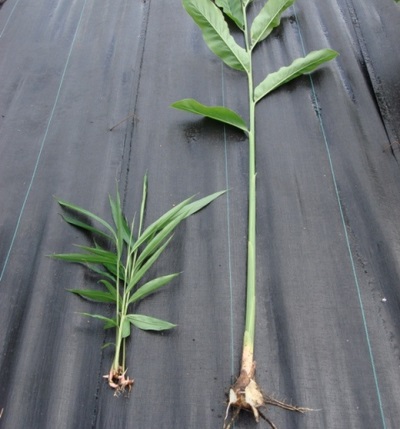
Blooms from March to June. Its flowers are short tubules with oblong blades. Their petals are white with pink stripes. They are collected in spike-shaped inflorescences at the very top of the plant. Spikelets are up to 10 cm. The fruits resemble red boxes with small seeds inside.
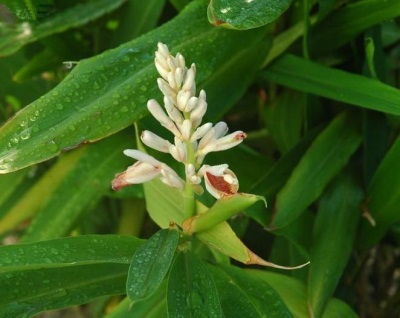
Root
The roots are called "rhizome". They are thick creeping with a huge number of branches. Thickness 1-2 cm. The outer color is pale yellow to reddish, with dark transverse rings.
Namely, it is mainly used for medicinal purposes and cooking.
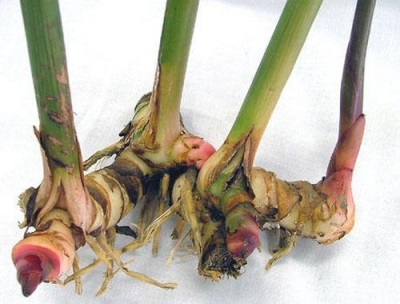
Kalgan spice is known in the form of wrinkled woody rectangular pieces. Due to its mixed red-brown color, it is easily distinguished from ginger roots.
Where does it grow
Alpinia officinalis from China, more precisely from the Chinese island of Hainan, has spread almost all over the world. Countries where you can find galangal today:
- Thailand;
- the island of Java (in Indonesia);
- Mediterranean countries;
- countries of Central Asia, Transcaucasia, Armenian and Iranian highlands;
- Caucasian region;
- states in southern Africa;
- countries of North and South America.
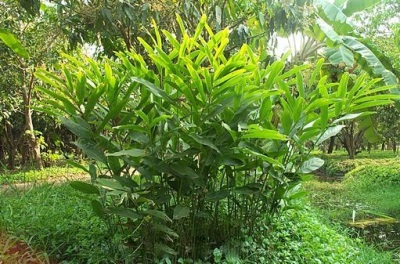
spice making method
As spices, alpinia use its underground part.
They need to be collected in late autumn and early spring. To do this, you need to choose only those plants that are more than 10 years old.
Strongly branched galangal rhizomes are mostly found about 2 centimeters thick. The process of harvesting spices begins with the collection of galangal and the separation of the above-ground part of the herb from the rhizomes. Then the rhizomes get rid of numerous roots. Next, the top red skin is removed. The cleaned galangal is cut into rectangular pieces 5-8 cm long and dried in this state. Drying is carried out for several days in a highly ventilated room. Dried galangal rhizomes can be stored for up to 48 months. The shelf life of galangal can be extended in some ways, but they are rarely used.
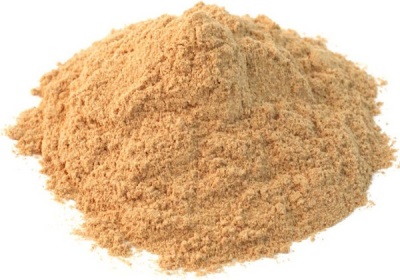
Peculiarities
The following features are inherent in alpinia officinalis:
- Alpinia officinalis is a very fragrant plant. The statement that it can be replaced with ginger is incorrect. Ginger smells like a burning citrus, while alpinia is more gentle and inviting.
- The taste of flowers, buds and stems is very piquant. The roots are bitter, spicy and pungent. Dried galangal has a sweeter, spicier flavor reminiscent of cinnamon.
Beneficial features
This type of plant is not in vain called medicinal, as it has:
- anti-inflammatory;
- antiseptic;
- antispasmodic;
- digestive stimulating properties.
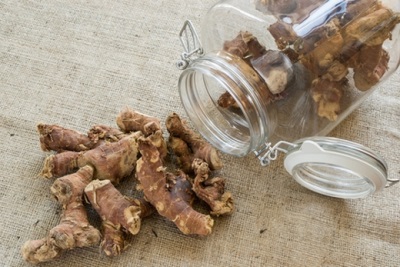
Contraindications
To date, Kalgan officinalis and preparations based on it have not revealed any contraindications. However, you should remember and follow a number of rules:
- When using applepinia concomitantly with other drugs, one should be vigilant. Especially if alpinia is used as a tincture.
- People suffering from gastric diseases and intestinal ulcers should take into account that the use of galangal can be harmful to their health and aggravate their condition.
Oil
Oil can be extracted from the roots of galangal.Kalgan oil has a greenish-yellow color and a fresh, spicy camphor aroma. This oil is extracted by steam distillation from the roots of galangal.
Galangal can also be used to extract resin. It is extracted only by extraction with a solvent. It has antiseptic, bactericidal, carminative, diaphoretic properties.
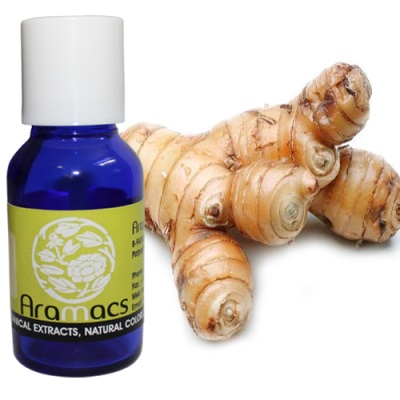
Application
In cooking
Galangal is a spicy edible plant. In different cuisines of the world it is used as:
- Seasoning in the form of a powder from the roots, stems and leaves.
- Fresh greens.
- As a vegetable in the preparation of soups in the form of a grated rhizome.
- For decorating and adding spice to dishes.
Galangal powder is mainly used by representatives of the countries of India and Indonesia. Other peoples of the East put freshly picked galangal flowers in their dishes. In European countries, fried beef meat, mashed potatoes are served with fresh galangal leaves. Instead of the usual hot spices and seasonings, galangal powder is put in food. Alpinia is also served with other vegetables, goulash, rice, sauces, as well as mushroom and fish dishes. Grated alpinia root can be stored frozen for a long time, and added to food if necessary.
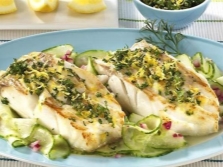

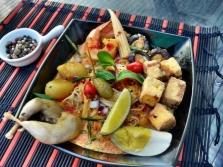
The recipe for the famous fried duck "bebek-betulu"
To prepare this dish, in addition to the duck itself and banana leaves, you need a jankap puree paste, which is made from: ginger and galangal rhizomes, onions, lemongrass stalks, garlic, nuts and chili peppers.
- First, prepare the jancap paste. To do this, grind all the ingredients in a blender. This paste will give the duck amazing softness.
- Brush the duck with jancap puree inside and out.
- Wrap the duck with banana leaves and cook for a while.
- Then put the duck carcass in the oven.
- The meat prepared in this way will turn out to be very soft and tender, and ginger with galangal root will give it an amazing aroma, pungency and piquancy.
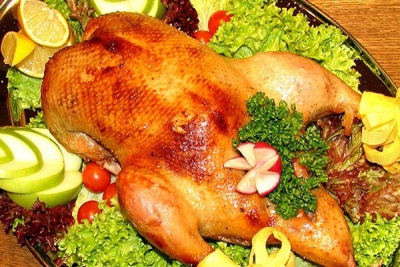
Recipe for a spicy Thai shrimp soup popularly known as tom yam kung
In order to cook such a soup, you need: 8 pieces of shrimp, 6 pieces of palm or bamboo shoots (they can be replaced with one eggplant), 10 pieces of straw mushrooms (you can use shiitake mushrooms or champignons), a tablespoon of fish sauce, a tablespoon of lime juice, 0 1/2 jaggery, 1.5 liters of water, some coconut milk and 3 lemongrass stalks, plus a natural spice mix of lemongrass, galangal, Karf lime and ginger for the base of tom yum soup. The base is needed in the amount of 4 teaspoons.
- Pour water into a saucepan and boil it.
- After boiling, put 2 tbsp. soup bases. You can add lemongrass stalks if you like.
- While the soup base will dissolve in the water, prepare the rest of the ingredients.
- Cut the mushrooms into small pieces and pour boiling water over them.
- After taking the shrimp, wash and clean them in such a way that only tails become of them.
- Cut bamboo or palm shoots into thin strips.
- Pour chopped mushrooms and bamboo into boiling water. Then put in the shrimp.
- After boiling for about 3 minutes, put the fish sauce and a lump of sugar. Stir the contents of the pot.
- When the sugar dissolves, you can remove the pan from the heat.
- Serve with coconut oil or cilantro leaves.
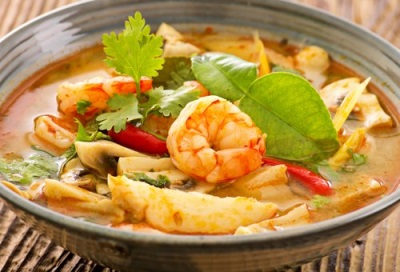
We advise you to watch the following video from which you will learn even more about the galangal plant.
In medicine
Alpinia is not in vain called alpinia officinalis.
The seeds of this plant treat:
- various infectious diseases (for example, cholera and malaria);
- various diseases of the gastrointestinal tract;
- toothache.
The underground part is applied:
- in the treatment of inflammation of the small intestine (chronic enteritis);
- with violations of the digestive process.
On top of that, the roots of small galangal:
- help during bloating;
- prevent the occurrence of recurrence of diseases of internal organs;
- increase salivation;
- improve the activity of the stomach;
- increase appetite;
- relieve headaches;
- used for loss of consciousness;
- relieves seasickness.
Chinese doctors claim that galangal strengthens the immune system. It is especially useful for people with allergies, whose allergies are accompanied by a severe runny nose.
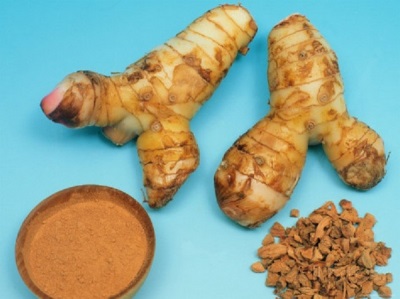
Swedish Longevity Elixir Recipe
This liquid medicine treats many diseases of the immune system and the gastrointestinal system. The composition of the Swedish Elixir includes:
- saffron, rhubarb, galangal and angelica roots;
- common thorn herb;
- gum resin - myrrh;
- some camphor.
In order to prepare this infusion, take 10 grams of the roots of the listed plants, mix with 5 grams of carlina, camphor and resin. In order to dissolve all the ingredients, add a little organic solvent. For this purpose, high-quality vodka is suitable. Add a few drops of aloe juice and leave alone for 10 days. When the tincture is ready, pour into small bottles or other well-sealed glassware. Storage of tincture should be carried out at a low temperature, preferably in the refrigerator.
Remedy for digestive disorders
This infusion helps with lack of appetite and disorders in the digestive system. Preparing this elixir is quite simple: pour one glass of boiling water over 1 tsp. ground dry galangal.Strain after 15 minutes and leave for a couple of hours in a bright, warm place. For medicinal purposes, take a small cup 30 minutes before meals.
Infusion that supports and strengthens the immune system
This infusion is similar to the previous one, but this time the powder must be poured with ethyl alcohol. This infusion helps to keep the immune system in good condition. The preparation of this infusion takes the same amount of time. Take 0.15 ml of infusion, diluted with water or juice. Drink 2-3 times a day 15 minutes before meals.
Aperitif that causes appetite, salivation and improves digestion
To prepare this drink, take 20 grams of galangal, grind 10 grams of cinnamon and anise, cumin and coriander seeds. Put everything listed in one bowl, pour 1 liter of red wine. Infused for at least two weeks. The optimal period is 1 month. Drink 100 ml one hour before meals.
Compress for skin cracks and hemorrhoids
With cracks in the skin and hemorrhoids, you can apply a compress based on alpinia. For a compress, take alpinia powder in a volume of 1 tbsp. and dilute with 1.5 faceted glass of water. Add a few drops of ethyl alcohol. Make a compress and apply on the sore spot.
At home
Thus, small galangal is used in various areas of the food and pharmaceutical industries:
- In the process of production of food vinegars, as well as in the process of distillery production.
- Based on alpinia, many well-known medicines are produced.
- Kalgan is part of the wines of French production.
- Hindus make various incense from alpinia officinalis.
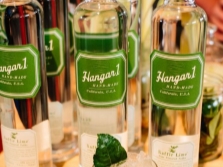
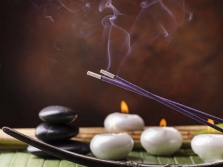
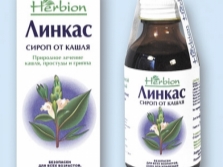
cultivation
Lovers of medicinal and spicy herbs can grow galangal without much effort at home. This plant needs a lot of light and heat.
The optimum temperature for its development is a temperature not lower than 20 degrees Celsius. Requires daily watering and top dressing once every two weeks during the period of active growth.
Faded shoots of trunks should be disposed of immediately by cutting with a knife. In winter, alpinia needs to provide 12-14 degrees of heat. At this time of the year, it needs to be watered occasionally, the main thing is that the soil is slightly dry.
Alpinia officinalis propagates by seeds and division of roots.
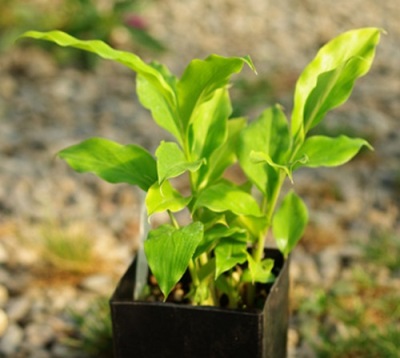
Seeds are best planted in boxes and shallow clay pots and provide a temperature of at least 22 degrees Celsius. The soil at the same time should contain equal parts of soddy soil, sand and humus. This will ensure good plant growth. Planting with rhizomes should be done in the spring. To do this, transplanting alpinia, you need to divide its rhizomes. Plant small pieces in wide vessels or in shallow containers. Plants need to be watered regularly.
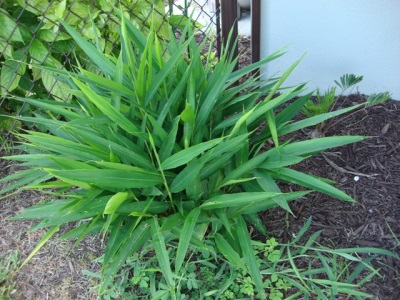
Interesting Facts
Until the 18th century, the inhabitants of Western Europe called kalgan "Russian root". He was so nicknamed because the Europeans learned how to use galangal in the kitchen from the Russians, who in turn learned this from the Chinese. Alpinia in Russian cuisine was especially popular in the 17th century. It was added in the preparation of gingerbread from choux pastry, honey and raspberry mash, sbitnya and kvass. Thanks to this, they had an incomparable pleasant smell.
In the 19th century, Europeans, mainly from France, began to use oil, which was obtained from alpinia, in the process of distillery production. Sharing galangal with wormwood ennobles its smell. Galangal is also used for other purposes, but this is extremely rare.
The Chinese are very fond of adding galangal to their dishes.Sometimes it is added instead of ginger, while reducing the dose of galangal twice. Galangal is also cooked in Asian countries. In Thailand, the spicy and sour Tom Yam soup is widely known, in the preparation of which galangal occupies not the last place. Representatives of the Orthodox Church add galangal roots in the preparation of the so-called consecrated aromatic oil, myrrh.
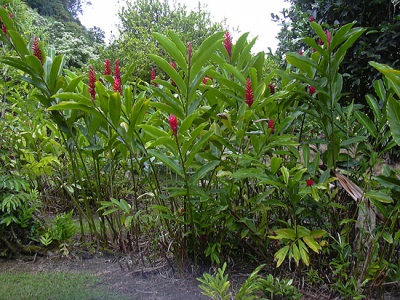


















I ate galangal soup in Thailand. It was an awesome dish. Unfortunately, I don't know the name.
Lots of good information!